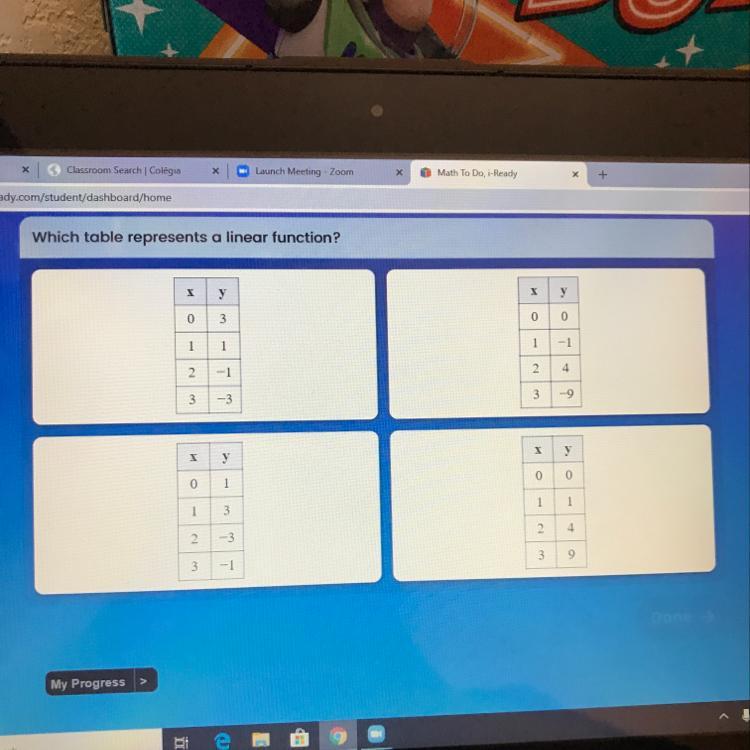Which Table Represents a Linear Function? A Comprehensive Guide

Understanding linear functions is fundamental in mathematics, especially when analyzing data. A common question that arises is: which table represents a linear function? This article aims to provide a detailed, a guide on identifying tables that represent linear functions, ensuring you have a clear and in-depth understanding of the topic.
Linear functions are a cornerstone of algebra and calculus, playing a crucial role in various fields such as economics, engineering, and the natural sciences. But how do you identify a linear function from a table of values? This article will walk you through the key concepts, provide actionable insights, and help you distinguish linear functions from other types of functions.
Key Takeway
- A linear function can be identified by a constant rate of change between its variables.
- The table representing a linear function will show a consistent difference in the y-values when the x-values increase by a fixed amount.
- Understanding the characteristics of linear functions helps in various real-world applications and problem-solving scenarios.

Detailed Explanation
Parties Involved?
Linear functions are essential for students, educators, and professionals in fields that require data analysis and interpretation. Mathematicians and statisticians often use linear functions to model relationships between variables. Educators teach these concepts to help students develop critical thinking and problem-solving skills. Professionals in engineering, economics, and the natural sciences apply linear functions to predict outcomes and make informed decisions.
Timeline of Events
The concept of linear functions has been around for centuries, with early contributions from ancient Greek mathematicians. The formalization of linear functions as we know them today began in the 17th century with the development of analytic geometry by René Descartes and Pierre de Fermat. Over time, the understanding and application of linear functions have evolved, becoming a fundamental part of modern mathematics and its applications.
How Does This Impact Them?
Linear functions have a significant impact on both personal and professional lives. In education, understanding linear functions is crucial for academic success in mathematics and related subjects. In professional settings, linear functions are used to model and solve real-world problems, such as predicting trends, optimizing processes, and making data-driven decisions. For example, in finance, linear functions can help in forecasting future stock prices or economic indicators.
Public and Media Reactions
The understanding and application of linear functions are generally well-regarded in educational and professional communities. Media coverage often highlights the importance of mathematical literacy, including the ability to understand and apply linear functions. For instance, news articles and reports on economic trends, scientific research, and technological advancements frequently emphasize the role of linear functions in analyzing and interpreting data.
Upcoming Plans
The future of linear functions in education and professional fields looks promising. With the increasing emphasis on STEM (Science, Technology, Engineering, and Mathematics) education, the understanding of linear functions will continue to be a critical skill. Upcoming plans in educational curricula include integrating more real-world applications of linear functions to enhance students’ learning experiences. In professional fields, advancements in data analysis and machine learning will further leverage linear functions to solve complex problems and drive innovation.
In conclusion, identifying which table represents a linear function involves recognizing a consistent rate of change between variables. This skill is fundamental in various academic and professional fields, offering valuable insights and solutions to real-world problems. By understanding the characteristics of linear functions and their applications, you can enhance your analytical abilities and make informed decisions. Stay curious and continue exploring the fascinating world of mathematics!
We hope this comprehensive guide has provided you with a clear and in-depth understanding of how to identify tables that represent linear functions. Whether you’re a student, educator, or professional, mastering this concept will undoubtedly benefit your mathematical journey and beyond.

